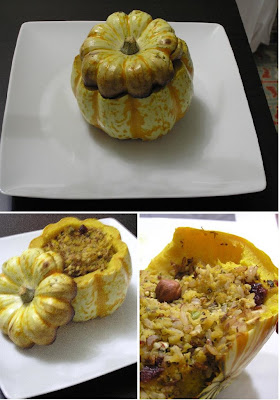With all that time of silence, I could have come back with a long post. Apologizing for missing Thanksgiving and the preparation of Christmas cookies (and partly blaming work, health, and all those stuff that continue to keep me busy). Telling you about my wonderful week-end in London, trying to resist to the omnipresence of Christmas cookbooks. I still don’t know if the 3 books I carried in my backpack are a proof that I succeed or failed…. To my discharge, one of them was planned (and searched… in 5 libraries! So I will make sure to use Anita’s Field Guide to Cookies a lot as soon as the Christmas holidays start).
The thing is, since I’m no good at writing, it would have been even longer before I’d give you this new recipe. And, after seeing the tart disappear in less than 5 minutes, and being addressed by a group of 4 people with a “You made the nutella tart? It’s amazing! Can I have the recipe please?” I sort of understood this was urgent.
See, I made it for Juliette’s birthday, because I always get confused about the fruits she likes and doesn’t. But I have very clear memories of the many holidays we spent in Bretignolles. Breakfast with a gache vendéenne and nutella has always been part of it, so I was pretty sure she’d also enjoy the tart. It is creamy and crunchy thanks to the hazelnuts, but mostly rich and chocolaty, so that a simple bite brings you total satisfaction. Apparently, everyone thought so…
From Pierre Hermé
1 disk of sugar dough for the tart shell (here or there)
7 oz. nutella
5 oz. bittersweet chocolate
1 cup (2 sticks) butter
1 egg
3 yolks
2 Tbsp sugar
5 oz. Coarsely chopped hazelnuts
Preheat oven to 350°F.
Roll the disk of dough into an 12-inch circle, 1/4-inch thick, on a lightly floured surface. Line a 10-inch pie pan, leaving a 1-inch overhang.
Line shell with foil and fill with pie weights. Bake until edge is pale golden, about 12 minutes.
Spread nutella over bottom of the tart shell.
Stir chocolate and butter in heavy medium saucepan over low heat until melted and smooth. Remove from heat. Cool to lukewarm, stirring often. Stir the egg and yolks one into melted chocolate, one at a time. Whisk slowly, starting at the center and slowly working your way out in concentric circles until you have a smooth, shiny mixture. Finally incorporate sugar.
Pour filling into cooled crust, over the nutella. Sprinkle with chopped hazelnuts and bake until filling is set about 3 inches from edge but center is still wobbly, 11 minutes at 360°F. (Center will continue to set as tart cools.) Partly cool in pan on rack, about 30 minutes, before serving. This is also very good at room temperature.
Tarte au Nutella
De Pierre Hermé
1 disk of sugar dough for the tart shell (here or there)
7 oz. nutella
5 oz. bittersweet chocolate
1 cup (2 sticks) butter
1 egg
3 yolks
2 Tbsp sugar
5 oz. Coarsely chopped hazelnuts
Preheat oven to 350°F.
Roll the disk of dough into an 12-inch circle, 1/4-inch thick, on a lightly floured surface. Line a 10-inch pie pan, leaving a 1-inch overhang.
Line shell with foil and fill with pie weights. Bake until edge is pale golden, about 12 minutes.
Spread nutella over bottom of the tart shell.
Stir chocolate and butter in heavy medium saucepan over low heat until melted and smooth. Remove from heat. Cool to lukewarm, stirring often. Stir the egg and yolks one into melted chocolate, one at a time. Whisk slowly, starting at the center and slowly working your way out in concentric circles until you have a smooth, shiny mixture. Finally incorporate sugar.
Pour filling into cooled crust, over the nutella. Sprinkle with chopped hazelnuts and bake until filling is set about 3 inches from edge but center is still wobbly, 11 minutes at 360°F. (Center will continue to set as tart cools.) Partly cool in pan on rack, about 30 minutes, before serving. This is also very good at room temperature.
Tarte au Nutella
De Pierre Hermé
1 fond de tarte sucrée (ici ou là)
200g de nutella
140g de chocolat noir
200g de beurre
1 œuf
3 jaunes
2 cuillères à soupe de sucre
140g de noisettes grossièrement hachées
Préchauffez le four à 180°.
Farinez abondamment le plan de travail ainsi que le rouleau à pâtisserie, puis étalez la pâte sur 2 à 3 mm d'épaisseur.
Etalez le disque de pâte en un cercle légèrement plus grand que votre moule à tarte (la recette a été réalisée avec un moule de 27cm). Foncez votre moule (beurré et fariné) avec la pâte et faites la précuire 12 minutes au four.
Tartinez le fond de la tarte avec le nutella. Réservez au frais.
Faites fondre le chocolat avec le beurre. Laissez refroidir légèrement (jusqu’à environ 40°). Incorporez délicatement l’œuf au chocolat. Utilisez une maryse pour éviter d’incorporer de l’air dans la ganache. Incorporez ensuite les jaunes un à un, puis le sucre.
Versez la ganache sur le nutella dans le fond de la tarte, et parsemez de noisettes grillées.
Faites cuire la tarte 11 minutes à 190°, juste assez pour que les bords soient fermes et le centre encore tremblotant.
Laissez refroidir dans le moule, environ 30 minutes, et servez tiède ou à température ambiante.
La suite, please
Faites cuire la tarte 11 minutes à 190°, juste assez pour que les bords soient fermes et le centre encore tremblotant.
Laissez refroidir dans le moule, environ 30 minutes, et servez tiède ou à température ambiante.




































